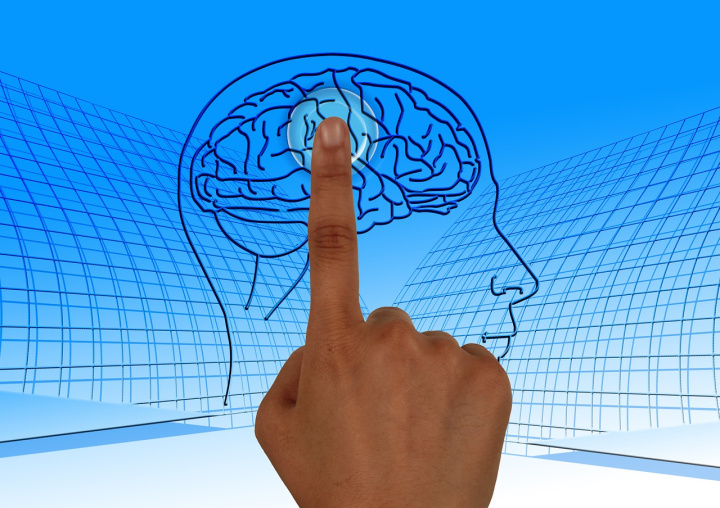What is Go Board Game. How the Ancient Wisdom Helps Business
We tell how the ancient game can help to do business in modern conditions.
In which country was the board game go invented? The Go board game was created in China. Historians of Go believe that it appeared as a result of the evolution and mixing of several similar games. Further development over several thousand years took place in mainland China, as well as in Japan and Korea. Therefore, intellectual entertainment has absorbed the philosophy and specifics of the perception of the world by these East Asian civilizations.
Short timeline
Go is the oldest board game in human civilization. Its age, according to various sources, ranges from 2500 to 4000 years.
- 548 BC - the first documentary mention of the game. At that time, Chinese philosophers, including Confucius, were already illustrating conclusions with situations that developed during the game.
- VI-VII centuries - the game penetrates the Japanese islands and the Korean peninsula. There, it quickly takes root in local cultures.
- End of the 16th century - the first mention of Go in European sources. Jesuit missionary Matteo Ricci writes about playing on an "empty board with over 300 squares".
- 17th century - in China, Go becomes one of the four skills (besides playing the lute, drawing and calligraphy) that distinguish a person of noble birth. However, archaeological finds show that Go has always been played by all segments of the population.
- 1710 - the philosopher and mathematician Gottfried Wilhelm Leibniz publishes a work describing this Chinese game. The text was written in Latin. Therefore, it remained known only to a small circle of intellectuals.
- 1880 - "discovery" of Go for Western civilization. The German chemist Oskar Korschelt publishes several papers on Go. In them, he sets out in detail the rules and terminology of the game. Since Korschelt got acquainted with Go in Japan, Japanese terminology has been used by Western fans of the game since then.
- 1931 - the book of mathematician, philosopher, second world chess champion Emmanuil Lasker was published. The author devotes more than a quarter of the book to the description and analysis of the oriental game.
- Second half of the 20th century - the game is gaining popularity both in the USA and Western Europe and behind the "iron curtain" - in the USSR and the countries of the Warsaw bloc.
- 2016 - South Korean professional player Lee Sedol loses a 5-game match to Google's DeepMind algorithm AlphaGo. The defeat of a person for a while fueled interest in the game.
What is Go board game
For the sake of brevity, I will not describe in detail the rules of the game of Go. If desired, the reader can always find resources on the Internet, where the topic is covered in great detail. Let's just focus on the main points.
Inventory - the game is played on a lined board called a goban. A grid of perpendicular lines is drawn on the board. The points of their intersection are called game points.
The classic grid has a size of 19 by 19 lines and 361 game points. The game is played with special items called stones. The stones, like the pieces in chess, are black and white.

The goal is to enclose with stones of your color on the game board an area larger than the opponent.
A move is a movement of a stone to one of the game points on the board. There are no restrictions. Unless black always starts the game. But the placed stone does not move until the end of the game. A single stone or several stones are considered captured if the opponent's stones are located on all neighboring game points vertically and horizontally. The captive stone is removed from the board.
Game over. The game is considered completed if it is impossible to make a move that can either give a point to the walker or take away a point from the opponent.
Go aesthetics
Like many phenomena of the civilizations of East Asia, the game of Go has a special aesthetics and etiquette. Of course, these days you can play both on the desktop and in the mobile application. But it's like drinking from a cardboard cup on the go instead of slowly savoring tea from a thin china cup. Because the observance of go rituals gives the game a special charm. And for us, the inhabitants of the West, it is also a chance to touch a foreign civilization.
As mentioned above, the game is played on a goban board. The Chinese version of the goban is square. In Japan and Korea, the board is rectangular with an aspect ratio of 15:14. It's done with perspective. Such a board for players looks like a square. The classic board is designed with players sitting on the ground. Therefore, such a board looks like a low table.
Depending on the version of the game, the stones can be either lentil-shaped (Japanese) or plano-convex (Chinese tradition). Go connoisseurs are sensitive to the materials from which the stones are made. They do not recommend any type of plastic. These materials deprive participants of the physical sensations of playing Go. Plastic stones are light, do not create the desired sound when placed, and easily fly off the board. The Chinese consider yongzi stones to be ideal. The composition of this material is kept secret to this day. Most likely, this is some kind of glassy mass of molten natural minerals.
- Automate the work of an online store or landing
- Empower through integration
- Don't spend money on programmers and integrators
- Save time by automating routine tasks
Connoisseurs are very respectful of Go board game stones made of porcelain, jade, and some types of shale.
Stones are stored in a special bowl with a lid - goke. It is a wooden bowl with a lid. In the lid, the players put the captured stones.
The stones are supposed to be held with the index and middle fingers. It is considered tactless to throw stones into the goke bowl with a roar, to rattle them, to take several stones at once.
Before and after the game, the opponents must bow and together remove the stones of their color from the board.
In general, among Go lovers, it is very important to maintain calmness and balance both for players and spectators.
A cure for the diseases of age
It is obvious that any game is the same training for the brain, as sport is for the muscles. However, the complexity and depth of the ancient oriental game distinguishes it from other board games. The long history of Go revealed one important pattern - senile dementia was extremely rare among professional players. The explanation was found not so long ago. Alzheimer's disease is largely caused by a person's unwillingness to strain his brain, learn new things, and perform complex mental tasks. And regular practice of Go just requires frequent mental stress.

But prevention of age-related diseases is only one aspect. The topic of our discussion (the benefits of Go for business) is also most directly related to:
- Applicability of stratagems (in other words, techniques) used in the game to real life situations;
- Ultimate abstraction of the game. It allows you to draw parallels of Go with other areas of human activity;
- The lack of a random factor in the game. This makes it easier to find the reasons for winning or losing.
Ideal business hobby
To begin with, I will list some names: Bill Gates, Sergey Brin, Jack Ma, Henry Kissinger. All these people played Go and appreciated its application in business and politics.
Jack Ma, for example, remarked that "the principles I learned in Go laid the foundation for my business success." Yasuyuki Miura, marketing director of Japan Airlines and chief executive of Nikko hotel chain, is convinced that the game of Go helps to intelligently divide markets and then establish harmonious coexistence. He even dedicated a book to the subject.
Henry Kissinger drew attention to the fact that in Go, unlike chess, the goal is to expand one's own capabilities and narrow the opponent's capabilities. But not its complete destruction.
All these business stars considered goban as analogous to markets and territories, and stones as analogous to company resources. With this approach, each game in Go becomes a model for conquering new markets and building relationships with competitors. It has already been said above that Go stratagems are quite applicable to real life situations. In particular, the ability to play Go allows you to solve a whole list of tasks that every business constantly faces:
- Using limited resources and time to maximize profits;
- Building optimal interaction between company departments;
- Determination of priority vectors of business development;
- Entering a market with established competition;
- Countering the invasion of the markets developed by your business;
- Creation of a strategic plan of action in a rapidly changing market;
- A combination of a global approach with a local one.
Beginner tips
Suppose one of the readers, after reading it, decides to take go seriously. Where to start? What to pay attention to?
- The role of the mentor. Yes, you can do the first acquaintance with the rules yourself. But a mentor in Go helps a beginner to model situations from real life on the board, to delve into his own actions and mistakes.
- Hypothesis testing. Learn to embody a real business situation in moving stones on a board. Go is not a panacea. And it should not become the only decision-making tool. But it allows you to highlight routine things in a new way.
- Analysis of one's own behavior. Beginners often attribute their loss to a lack of experience. Experience shows that many mistakes are made under the influence of the character, state or habits of the player. Someone, due to an outburst of anger, begins to walk chaotically, someone misses a profit due to caution. This is where the role of the mentor is very important. It will help you find errors both in the game and in real life.
- Constancy. Returning to the played games allows you to work with the identified mistakes and improve your skills.
Conclusion
In conclusion, one more opinion on the place of the ancient game. Yasuyuki Miura, mentioned above, sees much more potential in Go than just a profit-making tool. In his book “Go: An Asian Paradigm for Business Strategy,” he writes that the concept of Go can become a new paradigm for free, fair, and meaningful competition. Moreover, he Miura believes that the concepts of Go should be applied in world diplomacy and maintaining peace on the planet.
Time is the most valuable resource in today's business realities. By eliminating the routine from work processes, you will get more opportunities to implement the most daring plans and ideas. Choose - you can continue to waste time, money and nerves on inefficient solutions, or you can use ApiX-Drive, automating work processes and achieving results with minimal investment of money, effort and human resources.


